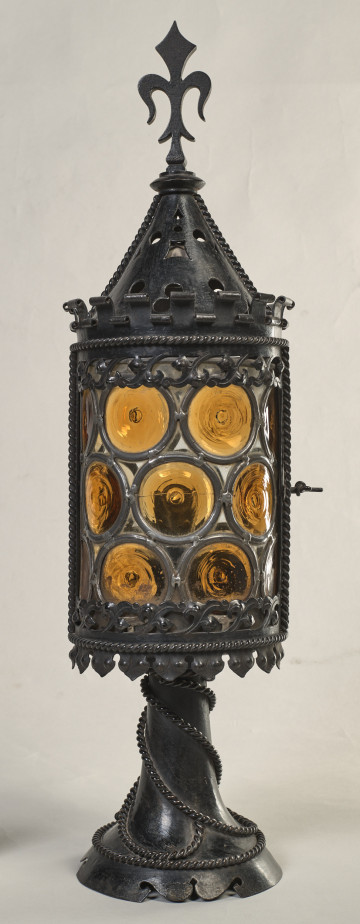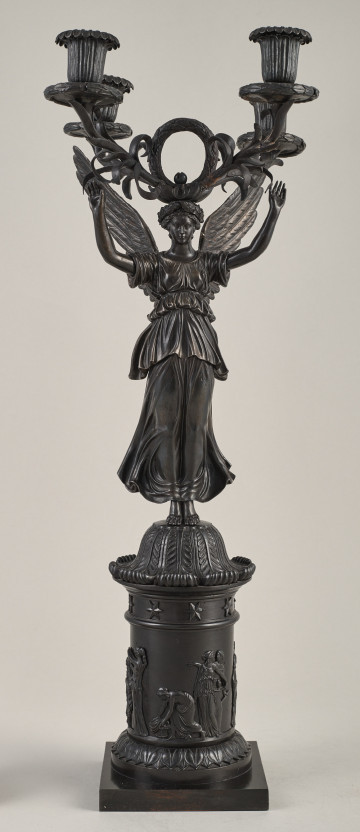
Lantern
16th / 17th century
Castle Museum in Łańcut
Part of the collection: Lamps, chandeliers and sconces
Sconce, one of two identical pieces in the collection of the museum. A sconce is a lamp or candleholder, most commonly wall-mounted, frequently with a glass or metal mirror to reflect the light. Initially, sconces were standing lamps, most commonly used until kerosene lamps were introduced. A characteristic trait of theirs was the placement of the burner beside the oil container, and not on top of it. In the 1780s, hanging sconces were used, which quickly became a commonplace decorative interior design feature. The described sconces are classical revival style, able to hold three candles, made of gilded bronze, and stem from the 19th century.As a light source, the candle was in common use until the invention of the light bulb, meaning, until the 19th century, afterwards its use was guided by aesthetic considerations. Candles were known in antiquity, their wicks were made of linen coated with beeswax, with the homes of those less well off using animal tallow (tallow candles). Contemporary bees wax candles are equally expansive, hence the majority is made of paraffin or stearin. The trunk is rectangular, narrower towards the bottom, ending with finial. At the top, it is transformed into a fluted vase, also crowned with a finial. Three arms bent to the shape of the letter S end in bobeches and sleeves for candles; they are decorated with bold acanthus leaves and a pearl motif. The arms hold a garland with oak leaves and acorns, the ends of the garland hang loosely.
Author / creator
Object type
Lamps, chandeliers and sconces
Technique
forging
Material
bronze
Origin / acquisition method
decyzja administracyjna
Creation time / dating
Creation / finding place
Owner
Castle Museum in Łańcut
Identification number
Location / status

16th / 17th century
Castle Museum in Łańcut

19th (?) century
Castle Museum in Łańcut

20th century
Castle Museum in Łańcut
DISCOVER this TOPIC
National Museum in Szczecin
DISCOVER this PATH
Educational path